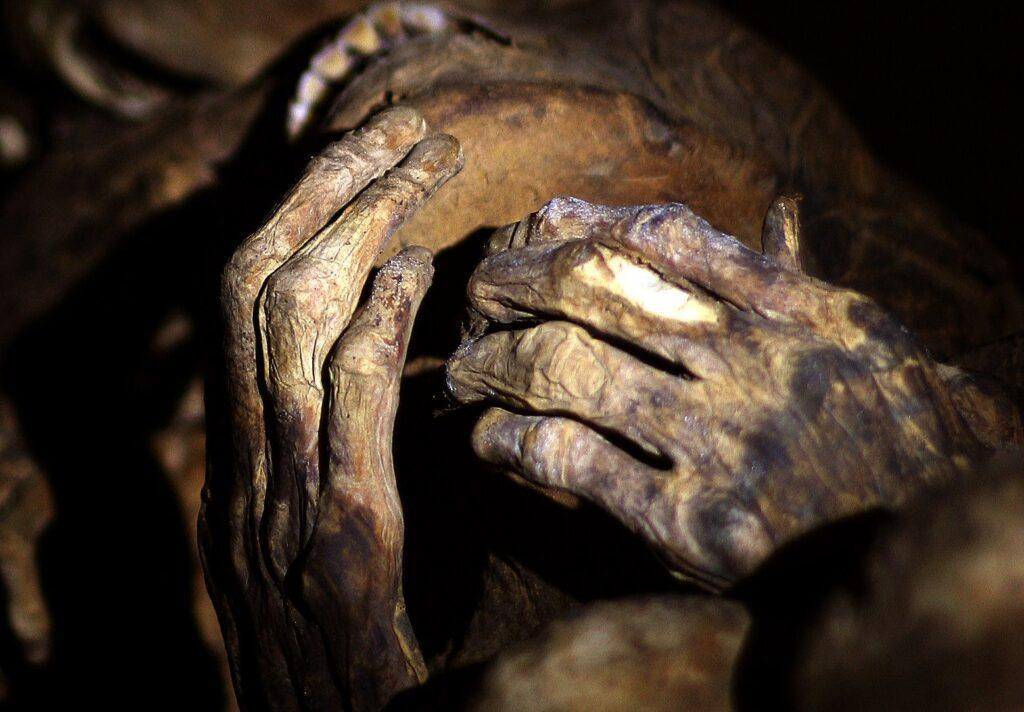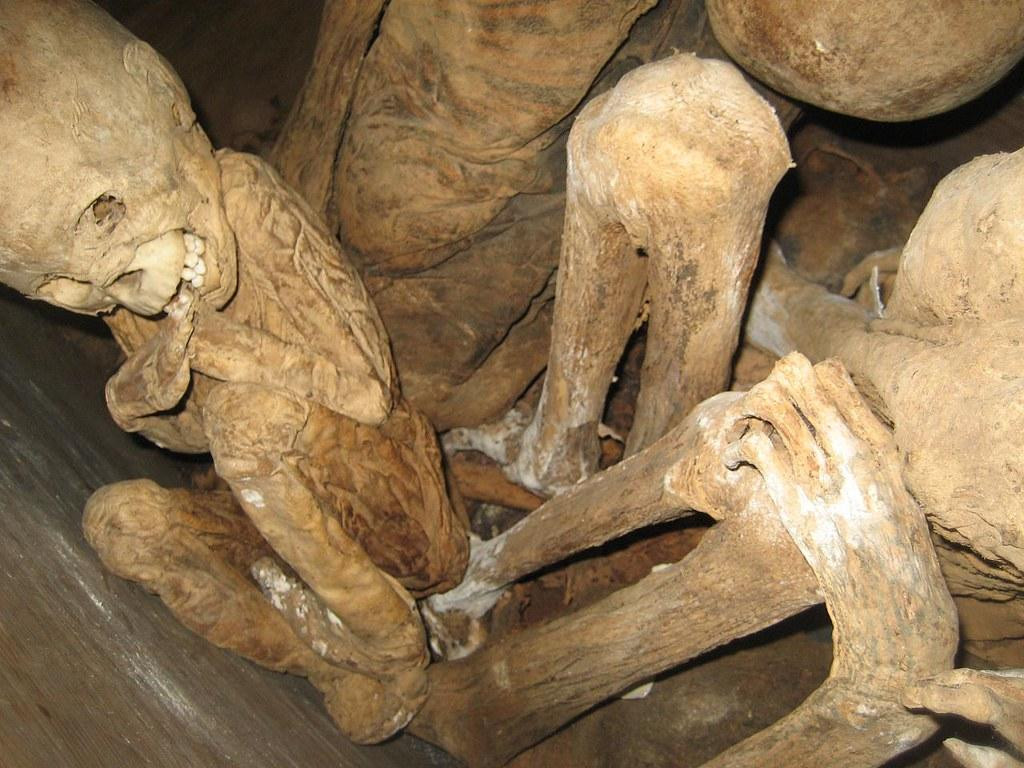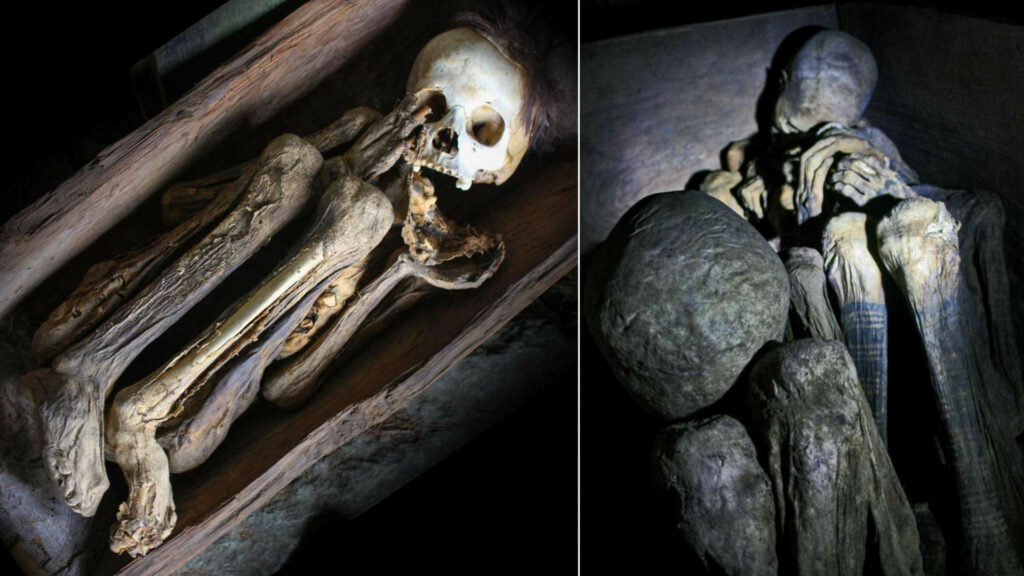Nestled deep within the enigmatic Kabayan Caves lies a remarkable secret waiting for those brave enough to navigate its ancient corridors. In the shadowy corners rest the charred human mummies, silent witnesses to a bygone era. Cloaked in mystery and obscured by the passage of centuries, these eerie artifacts have mesmerized scientists, anthropologists, and adventurers alike, inviting them to uncover the mysteries of their origins. What ancient customs, burial rites, or beliefs could have given rise to these haunting remains?
The Ibaloi Fire Mummies
The Ibaloi Mummies, often referred to as the Fire Mummies, Beñguet Mummies, or Kabayan Mummies, represent a remarkable archaeological discovery found within caves near the town of Kabayan in the Benguet province of the Philippines. Notable caves include Timbac, Bangao, Tenogtol, Naapay, and Opdas. These sacred sites served as burial grounds for the ancestors of the ancient Ibaloi people.
First uncovered in the early 20th century, the Fire Mummies fascinated Western observers, even though local communities had been aware of them for centuries. Sadly, the lack of protective measures for the caves led to significant looting of many mummies. This situation prompted Monument Watch to classify the site as one of the world’s 100 most endangered cultural heritage locations.

The Fire Mummification Process
Experts believe that the Ibaloi tribe began creating the Fire Mummies between 1,200 and 1,500 CE across five towns in Benguet, though some contend that the practice may have originated much earlier, around 2,000 BCE. The process of fire mummification was complex and uniquely initiated shortly before death:
- The individual ingested a highly saline solution to dehydrate their body.
- After passing away, the body was washed and placed in a seated position over a fire to dry.
Tobacco smoke was then blown into the mouth to further desiccate internal organs, and herbs were applied to the body before it was placed in a pine coffin within the caves.

Looting, Vandalism, and Preservation Efforts
With increased logging in the region revealing cave entrances, looting and vandalism became prevalent. Some visitors even defaced the mummies with graffiti. One notable mummy, Apo Annu, was stolen in the early 1900s but was later returned due to local beliefs in his supernatural abilities.
To safeguard Kabayan’s heritage, several initiatives have been undertaken:
- In 1998, the World Monuments Fund included the Kabayan Mummies on their Watch List.
- Funding was acquired for emergency conservation and management strategies.
- Local authorities launched a cultural awareness campaign.
- Facilities for tourists were established to manage visits and mitigate potential damage.
Despite these efforts, the Fire Mummies continue to face threats due to inadequate cave security. Officials are aware of an additional 50 to 80 mummy locations but keep them confidential to deter further vandalism. A small museum in Kabayan showcases a few mummies to promote awareness.
The Kabayan Mummy Burial Caves: A World Heritage Site
The Kabayan Mummy Burial Caves have been designated as National Cultural Treasures by the National Museum of the Philippines. They are currently being considered for nomination as a UNESCO World Heritage Site to guarantee their preservation and protection from theft and vandalism.

A Sacred and Captivating Experience
Visiting the Kabayan mummy caves offers a mesmerizing journey through history, archaeology, and spirituality. Guests can admire the meticulous mummification techniques employed by the Ibaloi people centuries ago. The caves radiate a sense of sacredness as they serve as final resting places for the departed.
As one approaches these caves and mummies, it is essential to approach with deep respect and reverence for these representations of a vibrant past that merit preservation and appreciation. Stepping inside transports visitors to a realm where time seems to stand still, fostering a connection with ancestral spirits and the rich heritage of Ibaloi culture.

